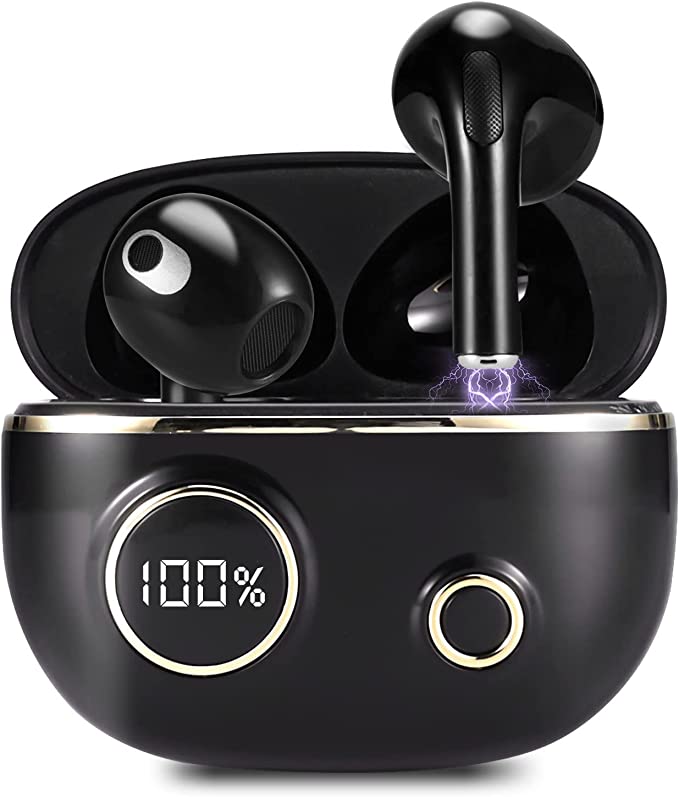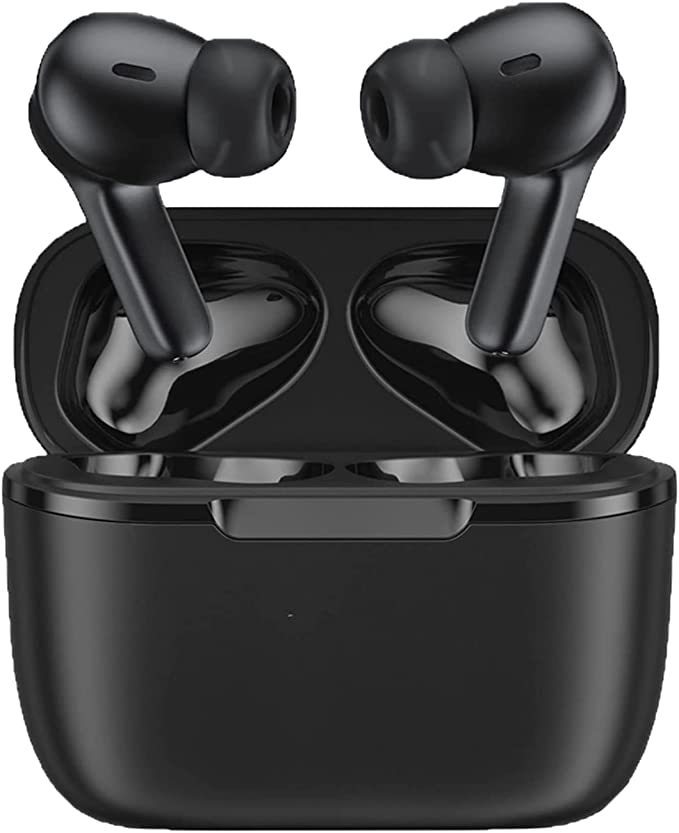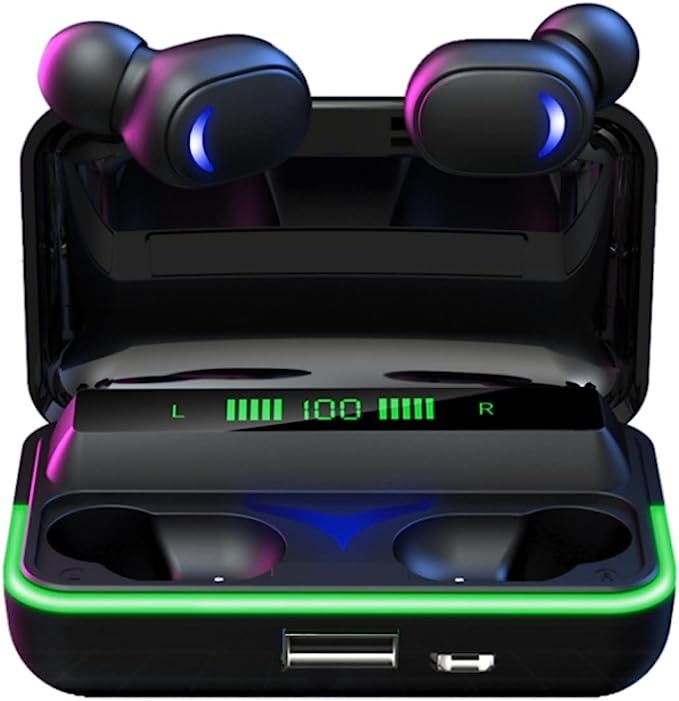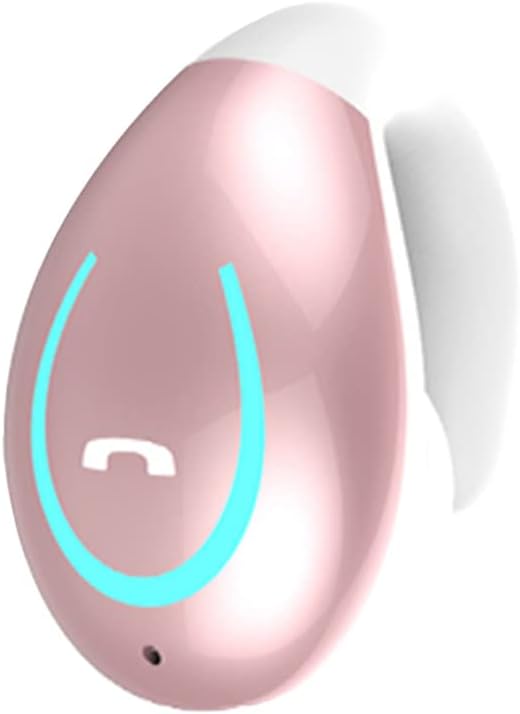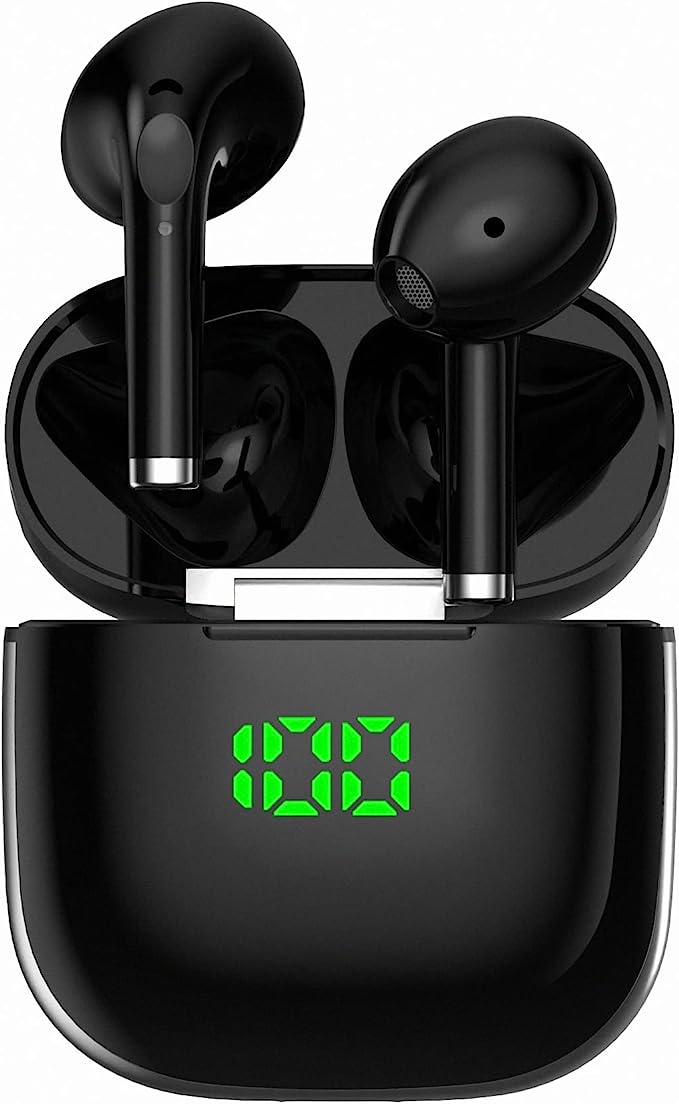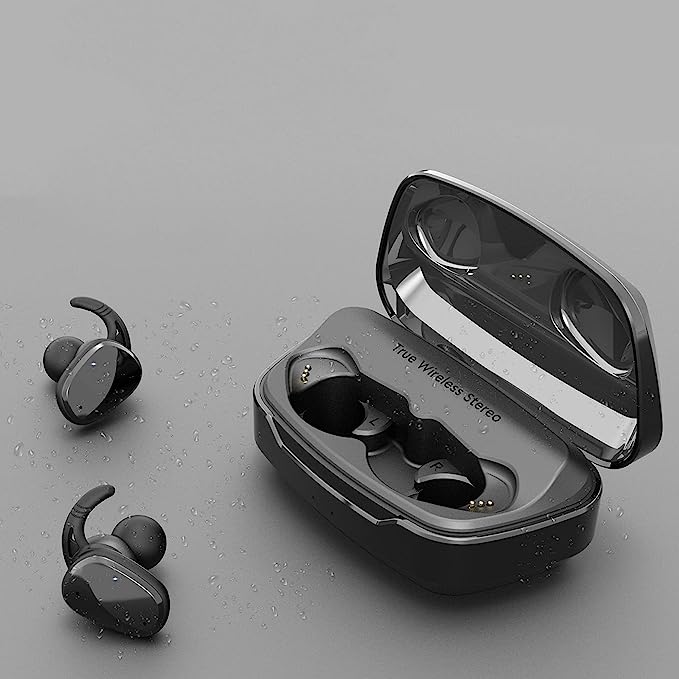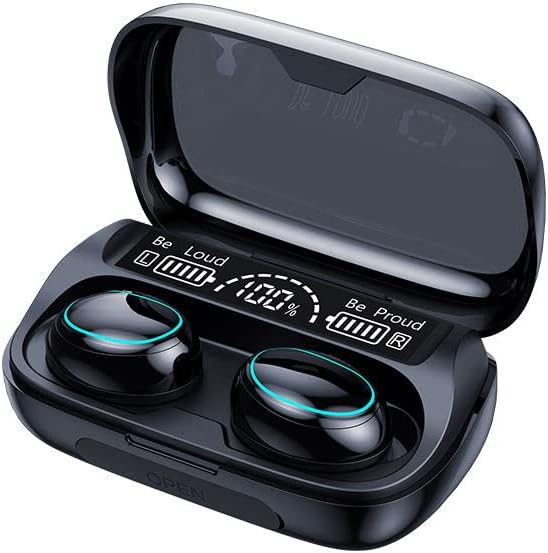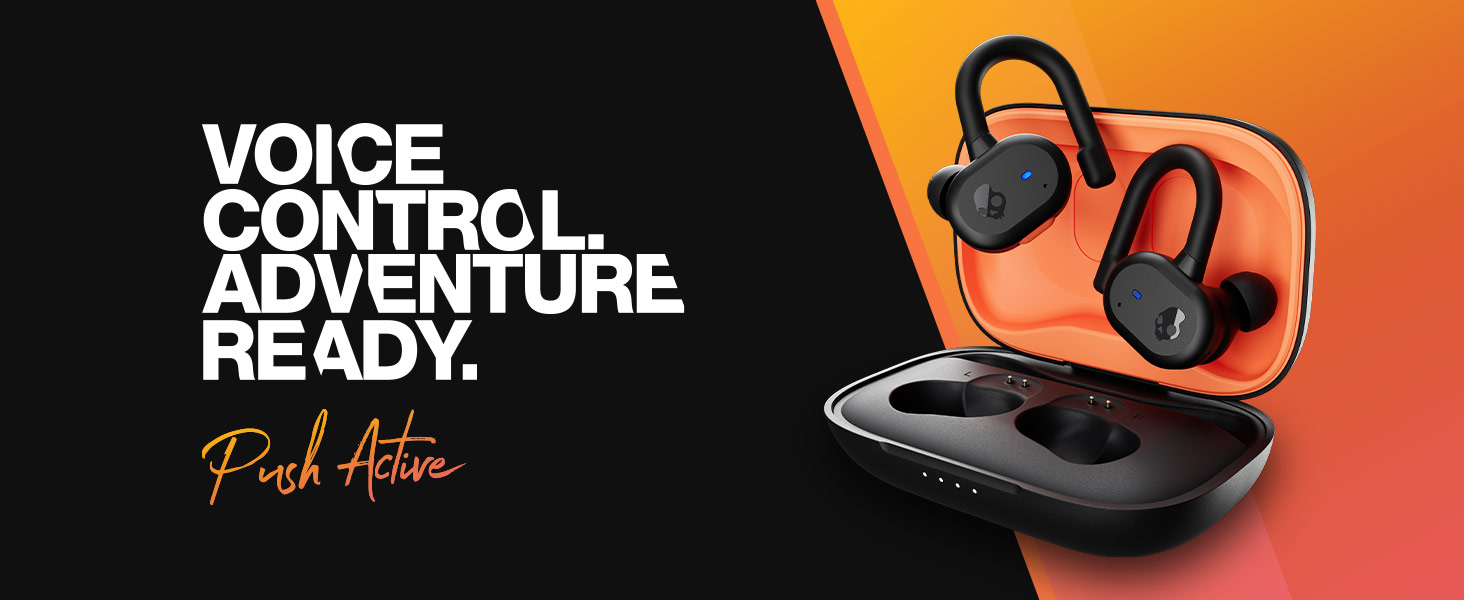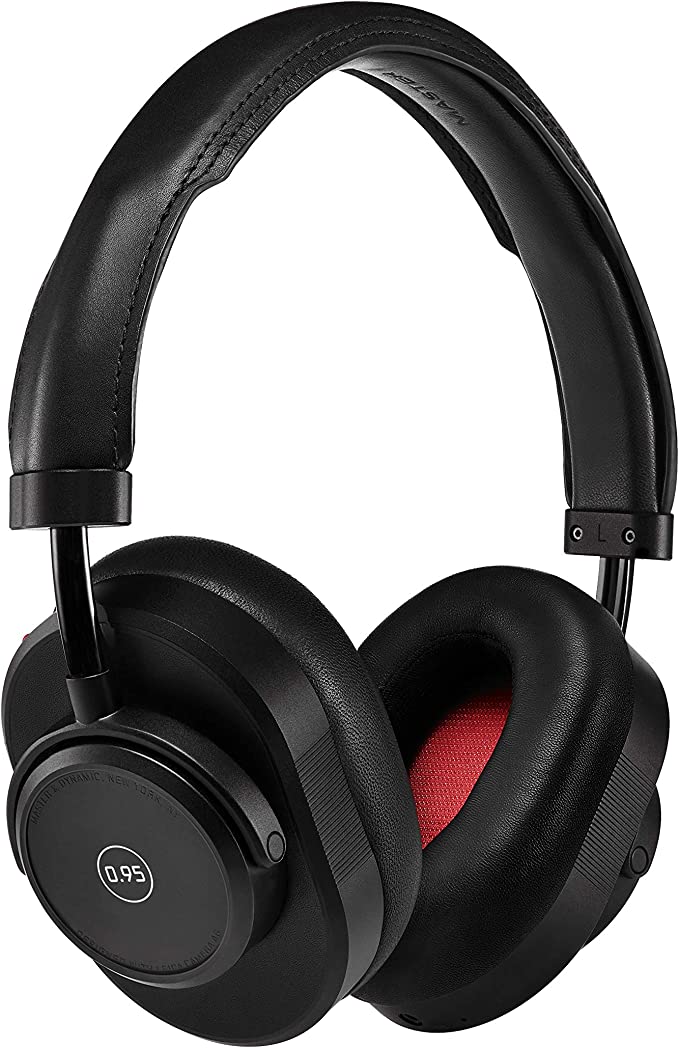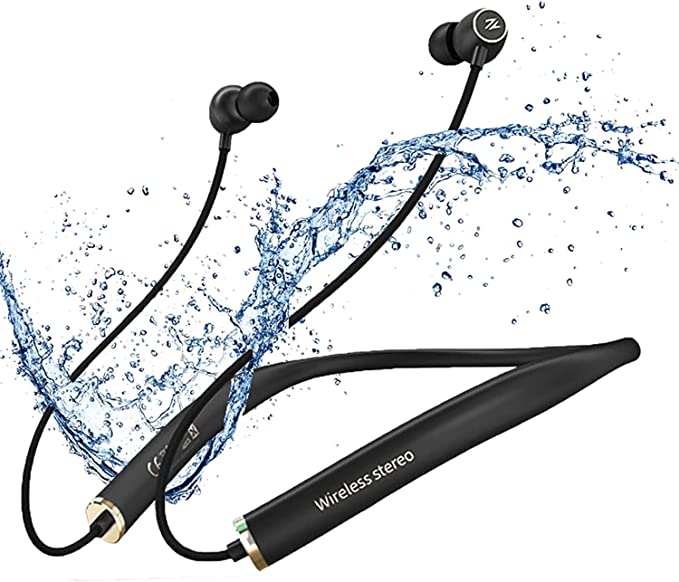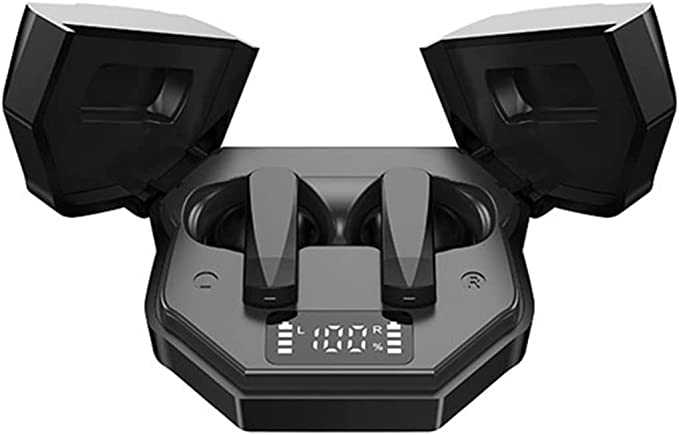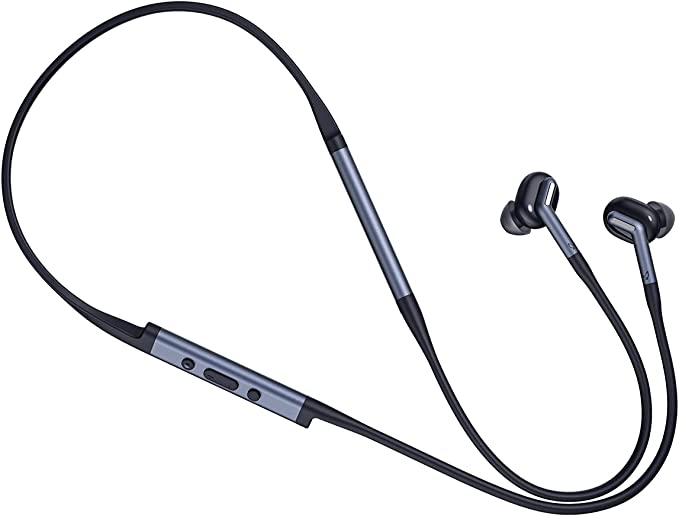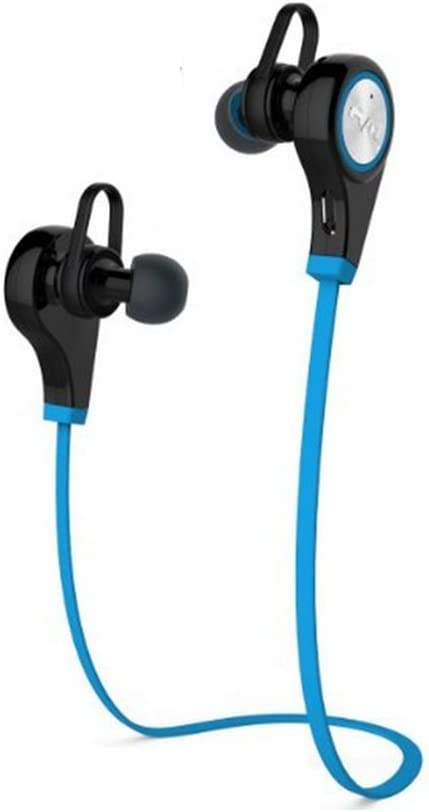UZiLaCo ZTM10 Wireless Earbuds: A Feature-Packed Pair for Music Lovers
Update on June 30, 2025, 3:25 p.m.
You reach into your pocket and your fingers find them—two small, smooth pods of plastic nestled in their case. You pop one out. It’s almost weightless, a mere 0.12 ounces. As you place the UZiLaCo ZTM10 in your ear, a soft chime signals its connection to your phone, and your world fills with music. It’s a moment of effortless, everyday magic. But have you ever paused to consider the universe of ingenuity packed into that tiny shell? Let’s take a journey beyond the surface and explore the hidden science you wear every day.

The Invisible Handshake: Our Story Begins with a Viking King
Before your music even begins, a silent, complex negotiation takes place. We call it Bluetooth 5.3. The name “Bluetooth” itself is a nod to Harald “Bluetooth” Gormsson, a 10th-century Viking king famed for uniting the disparate tribes of Denmark and Norway. In the same spirit, the technology unites our myriad devices.
But what makes version 5.3 so special? Think of it not as a brute-force connection, but as a highly efficient and polite diplomat. Older Bluetooth versions were like guests at a party who talked loudly and never left the buffet table, draining your device’s battery. Bluetooth 5.3, governed by standards from the Bluetooth Special Interest Group (SIG), is far more sophisticated. It uses clever channel classification to quickly identify and avoid crowded frequencies (like in a busy gym) and is exceptionally mindful of power, only “speaking” when absolutely necessary. This results in the stable, low-latency connection you experience, all while sipping, not gulping, your earbud’s precious battery reserves. It’s the invisible handshake that makes the whole experience possible.

The Power Plant in Your Pocket: Deconstructing the 50-Hour Myth
One of the most eye-catching specifications is the promise of 50 hours of playtime. This sounds like a marathon of non-stop audio, but the reality is more of a brilliant relay race. Your earbuds are the sprinters, and the charging case is the home base and medic station, all in one.
Here’s the simple math behind the magic: each earbud might hold enough charge for, say, 5-7 hours of listening. When they’re tired, you return them to the case, which acts as a portable power bank. The case’s larger lithium-ion battery can refuel the earbuds multiple times before it needs a charge itself. So, that 50-hour figure represents the total combined endurance of the entire system.
Inside these batteries, a silent dance of lithium ions shuttles between a positive and negative electrode, releasing energy. The LED Digital Display on the case is your window into this process, a clear and honest fuel gauge that vanquishes “battery anxiety.” When the whole system is depleted, a universal Type-C cable can replenish it in about an hour, getting your personal power grid back online with remarkable speed.

A Tiny Suit of Armor: What IPX5 Really Means for Your Workout
Life is unpredictable. A sunny jog can turn into a downpour; a workout always involves sweat. That’s where the IPX5 rating comes in, a standardized score for toughness defined by the International Electrotechnical Commission (IEC). Think of it as a tiny suit of armor for your electronics.
Let’s decode “IPX5”: * IP stands for Ingress Protection. * The X means it hasn’t been rated for protection against solids like dust. * The 5 is the crucial part. It signifies protection against low-pressure water jets from any direction.
In real-world terms, this is your permission to sweat freely. It’s assurance that your earbuds will survive being caught in the rain. It is, quite literally, sweat-proof. However, this armor has its limits. An IPX5 rating is like a high-quality raincoat, not a submarine. It’s not designed for a shower and certainly not for a swim. This resilience is often achieved with hydrophobic nano-coatings, an invisible shield at the molecular level that causes water to bead up and roll off, protecting the delicate electronics within.

The Symphony of Physics: How a 13mm Speaker Creates a Universe of Sound
Finally, we arrive at the heart of the matter: the sound itself. The claim of “Deep Bass Sound” isn’t just marketing; it’s rooted in physics, specifically in the earbud’s 13mm speakers, or dynamic drivers.
Imagine a drum. To get a deeper, more resonant boom, you need a larger drum skin. A dynamic driver works on a similar principle. It’s a miniature version of a traditional loudspeaker, using an electromagnet to vibrate a diaphragm (a thin, flexible membrane). This vibration pushes the air, creating the sound waves that travel to your eardrum. A larger diaphragm, like the 13mm one found here, can move more air with each vibration. This physical advantage makes it inherently better at reproducing low-frequency sounds, providing the physical foundation for that satisfying, deep bass you can feel.
It’s a symphony of physics, where electricity is transformed into motion, and motion into the music that moves you.

The Invisible Orchestra
As you place the earbud back in its case, it clicks satisfyingly into place, its light indicating that it’s refueling for the next adventure. What felt like a single, simple product is, in fact, a miniature orchestra playing in perfect harmony: a Viking king’s diplomatic legacy ensuring a stable connection, a chemical ballet providing days of power, a microscopic suit of armor fending off the elements, and a tiny drum creating a universe of sound. The true marvel isn’t just that it works, but that all this incredible science has become so small, so reliable, and so seamlessly integrated into the fabric of our lives.

